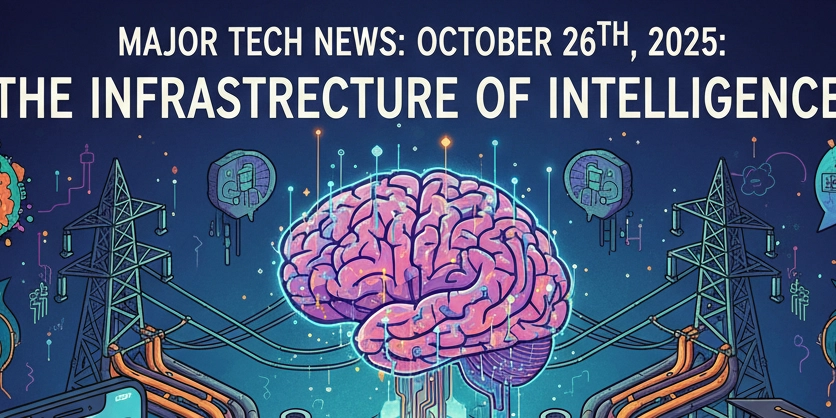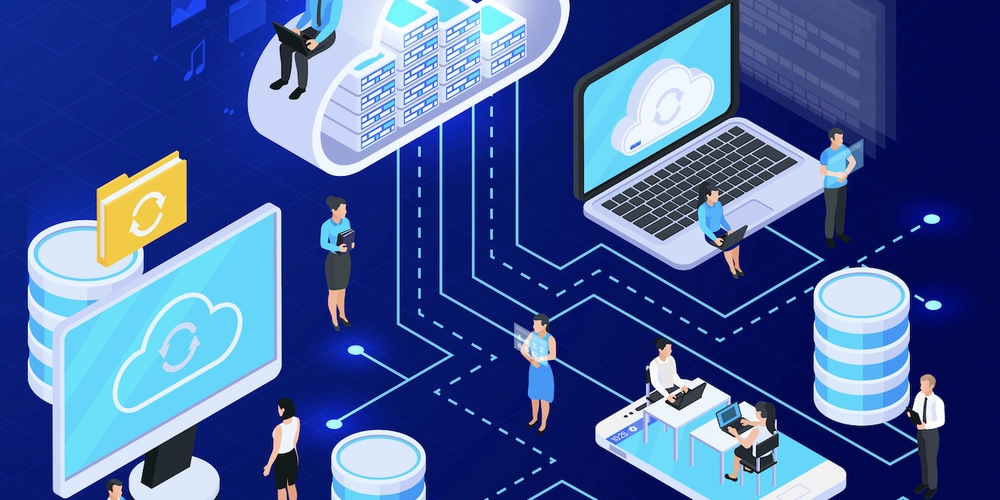The technology news cycle often focuses on shiny new consumer gadgets, but the developments on October 26th, 2025, highlighted something far more foundational: the massive, necessary infrastructure required to power the current boom in Artificial Intelligence. From international corporate partnerships to concerns about data center power grids and the changing nature of the entry-level tech job market, the underlying themes of the day revolved around building the world that AI demands.
The New Power Grid: Corporate AI Partnerships and Energy
A significant headline involved the deepening collaboration between a global technology leader and a major industrial player. Reliance and Meta announced a new joint venture focused on building enterprise-level AI products in India. The initial investment is substantial, with Reliance taking a majority stake. This move is less about consumer apps and more about creating core business intelligence tools, like advanced data analytics and automation, for a massive, rapidly growing market.
This kind of partnership shows that the AI race is not just about who has the best models, but who can successfully integrate AI into the actual backbone of businesses: supply chains, manufacturing, and internal operations.
Closely related to this push for enterprise AI is the sobering reality of the required physical power. An article from MarketWatch underscored a critical concern: Big Tech companies are independently investing billions in energy infrastructure to ensure their data centers, the physical homes of AI models, have reliable power, regardless of government grid upgrades. The piece argued that this private spending on nuclear, solar, and grid systems is becoming the largest infrastructure spending cycle in the country, essentially happening “whether Washington functions or not.” It’s a pragmatic, almost defensive move that highlights the immense, almost uncontrollable thirst that AI has for electricity, treating power reliability as a strategic, competitive asset.
Software, AI, and the User Experience
On the consumer and software side, news came from the mobile and creative worlds:
OnePlus unveiled details for its OxygenOS 16 update, built on Android 16. The focus areas, predictably, were a visual overhaul (dubbed ‘Liquid Glass’ design) and, more importantly, a collection of powerful new AI tools. Features like the ‘Private Computing Cloud’ and an ‘AI Writer Toolkit’ suggest that smartphone manufacturers are shifting from just offering incremental speed boosts to integrating AI directly into daily productivity and privacy functions. This makes the phone less of a tool for accessing apps and more of an AI-powered personal assistant built right into the operating system.
Separately, the graphic design platform Canva saw massive growth in India, which has emerged as its fourth-largest market and one of its fastest-growing globally. A key driver for this adoption is the increasing use of Canva’s AI-driven features like Magic Write and Magic Design. This trend illustrates how AI is not just a tool for professional coders but a democratizing force, enabling millions of students, small businesses, and casual creators to design complex graphics quickly. The growth reflects how AI is making once-specialized creative skills accessible to a much broader population.
The Human Toll: Job Market and Information Quality
While the technological progress is undeniable, two other stories offered a necessary counterpoint about the real-world impact.
First, a BBC study received attention for its finding that a high percentage of public-facing AI queries, nearly 45% produce erroneous answers on factual news. The article emphasized that these systems, built on broad public data, often generate “dangerously confident” results based on flawed, outdated, or exaggerated sources. This research serves as a clear, necessary caution for anyone relying on large AI models for critical, fact-based analysis, reminding us that the human layer of verification remains vital.
Second, the structural changes driven by AI hit home in the labor market. Reports highlighted a job crisis for entry-level tech graduates in America. Tasks traditionally assigned to junior developers, like basic code testing and data analysis, are increasingly automated by AI tools. This creates a difficult landscape where new graduates must acquire skills well beyond foundational coding, focusing instead on data infrastructure, advanced problem-solving, and managing the AI systems themselves. The market is rewarding adaptability and foresight, challenging the traditional, linear path from a Computer Science degree to a stable developer job.
The major tech news of October 26th, 2025, wasn’t marked by a single spectacular product launch, but by the quiet, fundamental restructuring of our digital and physical world. The day’s headlines show that the race is less about if AI will change things, and more about how we will power it, partner around it, apply it in daily life, and prepare the next generation to manage its complexities, especially the challenges of energy demands and maintaining truthful information. The future of technology is less visible on a screen and more rooted in the massive, invisible infrastructure being built right now.



